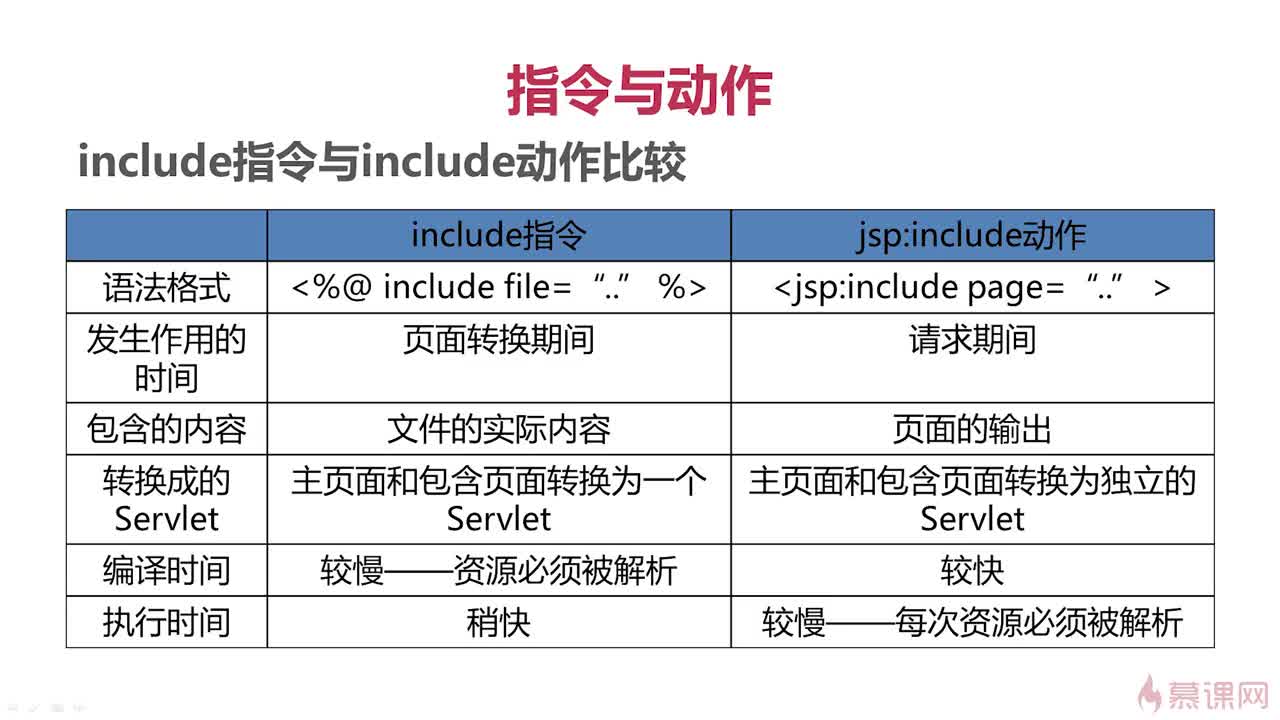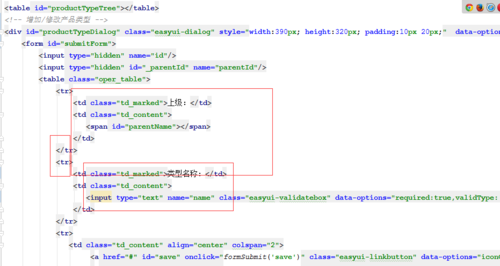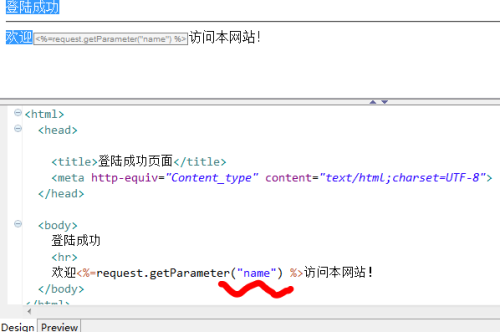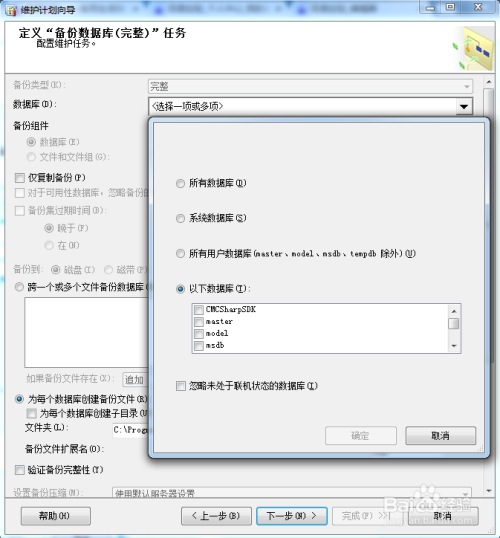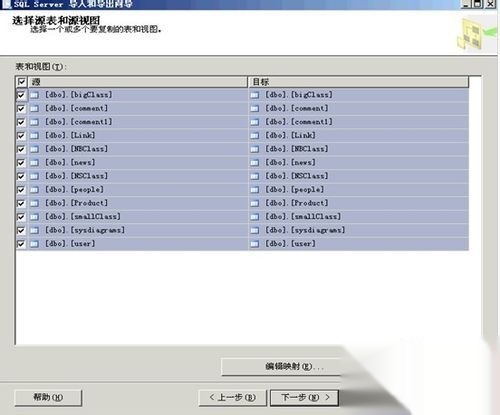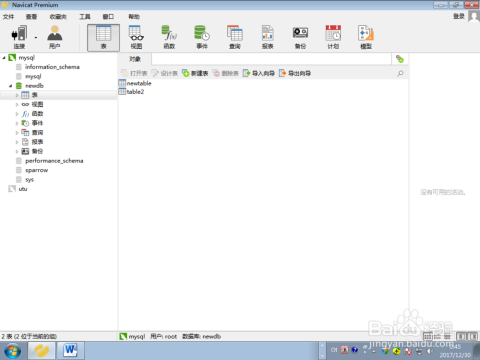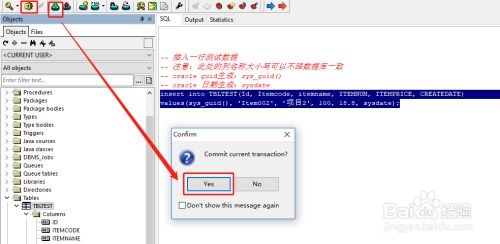如何将html导入jsp中
- 前端开发
- 2025-08-09
- 19
或
如何将HTML导入JSP中
在Web开发中,将HTML内容导入到JSP(JavaServer Pages)中是一个常见的需求,通过这种方式,开发者可以将静态的HTML内容与动态的Java代码结合起来,实现更加灵活和强大的Web应用程序,本文将详细介绍几种将HTML导入JSP的方法,并通过示例代码进行说明。
使用JSP的<jsp:include>
<jsp:include>是JSP提供的一个标准标签,用于在运行时将一个资源(如HTML文件)的内容包含到当前页面中,这种方法适用于需要动态包含内容的场景。
示例:
假设有一个名为header.html的HTML文件,内容如下:
<!DOCTYPE html>
<html lang="en">
<head>
<meta charset="UTF-8">My Web Page</title>
</head>
<body>
<h1>Welcome to My Web Page</h1> 在JSP页面中,可以使用<jsp:include>标签来包含这个HTML文件:
<%@ page language="java" contentType="text/html; charset=UTF-8" pageEncoding="UTF-8"%>
<!DOCTYPE html>
<html lang="en">
<head>
<meta charset="UTF-8">My JSP Page</title>
</head>
<body>
<jsp:include page="header.html" />
<p>This is the main content of the JSP page.</p>
</body>
</html> 在这个例子中,header.html将被动态地包含到JSP页面中,需要注意的是,<jsp:include>标签会在JSP页面被编译成Servlet时进行处理,因此它适用于包含动态内容。
使用JSP的<%@ include %>指令
<%@ include %>是JSP提供的另一个指令,用于在编译时将指定的文件内容包含到当前页面中,这种方法适用于包含静态内容的场景。
示例:
假设有一个名为footer.html的HTML文件,内容如下:
<footer>
<p>© 2023 My Company</p>
</footer> 在JSP页面中,可以使用<%@ include %>指令来包含这个HTML文件:

<%@ page language="java" contentType="text/html; charset=UTF-8" pageEncoding="UTF-8"%>
<!DOCTYPE html>
<html lang="en">
<head>
<meta charset="UTF-8">My JSP Page</title>
</head>
<body>
<p>This is the main content of the JSP page.</p>
<%@ include file="footer.html" %>
</body>
</html> 在这个例子中,footer.html将在JSP页面编译时被包含进来,与<jsp:include>不同,<%@ include %>指令在编译时处理,因此它适用于包含静态内容。
使用JSP的<c:import>标签(JSTL)
JSTL(JavaServer Pages Standard Tag Library)提供了<c:import>标签,用于在运行时将外部资源(如HTML文件)的内容包含到当前页面中,这种方法与<jsp:include>类似,但提供了更多的灵活性。
示例:
假设有一个名为sidebar.html的HTML文件,内容如下:
<aside>
<ul>
<li><a href="#">Link 1</a></li>
<li><a href="#">Link 2</a></li>
<li><a href="#">Link 3</a></li>
</ul>
</aside> 在JSP页面中,可以使用<c:import>标签来包含这个HTML文件:
<%@ taglib uri="http://java.sun.com/jsp/jstl/core" prefix="c" %>
<%@ page language="java" contentType="text/html; charset=UTF-8" pageEncoding="UTF-8"%>
<!DOCTYPE html>
<html lang="en">
<head>
<meta charset="UTF-8">My JSP Page</title>
</head>
<body>
<h1>Main Content</h1>
<c:import url="sidebar.html" />
<p>This is the main content of the JSP page.</p>
</body>
</html> 在这个例子中,sidebar.html将被动态地包含到JSP页面中。<c:import>标签与<jsp:include>类似,但它提供了更多的选项,例如可以指定字符编码、缓存控制等。
使用JSP的<iframe>
虽然<iframe>标签通常用于嵌入另一个HTML页面,但它也可以用于将HTML内容导入到JSP中,这种方法适用于需要在页面中嵌入独立内容的场景。
示例:
假设有一个名为advertisement.html的HTML文件,内容如下:
<div style="border: 1px solid black; padding: 10px;">
<h3>Special Offer!</h3>
<p>Buy one, get one free!</p>
</div> 在JSP页面中,可以使用<iframe>标签来嵌入这个HTML文件:
<%@ page language="java" contentType="text/html; charset=UTF-8" pageEncoding="UTF-8"%>
<!DOCTYPE html>
<html lang="en">
<head>
<meta charset="UTF-8">My JSP Page</title>
</head>
<body>
<h1>Main Content</h1>
<iframe src="advertisement.html" width="300" height="100"></iframe>
<p>This is the main content of the JSP page.</p>
</body>
</html> 在这个例子中,advertisement.html将作为一个独立的框架嵌入到JSP页面中,需要注意的是,<iframe>标签会创建一个独立的浏览上下文,因此它适用于嵌入独立内容。
使用JSP的<object>
<object>标签也可以用于将HTML内容导入到JSP中,这种方法与<iframe>类似,但提供了更多的控制选项。
示例:
假设有一个名为chart.html的HTML文件,内容如下:
<div style="border: 1px solid black; padding: 10px;">
<h3>Sales Chart</h3>
<img src="sales_chart.png" alt="Sales Chart">
</div> 在JSP页面中,可以使用<object>标签来嵌入这个HTML文件:
<%@ page language="java" contentType="text/html; charset=UTF-8" pageEncoding="UTF-8"%>
<!DOCTYPE html>
<html lang="en">
<head>
<meta charset="UTF-8">My JSP Page</title>
</head>
<body>
<h1>Main Content</h1>
<object type="text/html" data="chart.html" width="300" height="150"></object>
<p>This is the main content of the JSP page.</p>
</body>
</html> 在这个例子中,chart.html将作为一个对象嵌入到JSP页面中。<object>标签提供了更多的控制选项,例如可以指定类型、数据源、宽度和高度等。
使用JSP的<div>标签和JavaScript
在某些情况下,可能需要使用JavaScript来动态加载HTML内容到JSP页面中,这种方法适用于需要在用户交互时动态加载内容的场景。
示例:
假设有一个名为content.html的HTML文件,内容如下:
<div id="content">
<h2>Dynamic Content</h2>
<p>This content is loaded dynamically using JavaScript.</p>
</div> 在JSP页面中,可以使用JavaScript来动态加载这个HTML文件:
<%@ page language="java" contentType="text/html; charset=UTF-8" pageEncoding="UTF-8"%>
<!DOCTYPE html>
<html lang="en">
<head>
<meta charset="UTF-8">My JSP Page</title>
<script>
function loadContent() {
var xhr = new XMLHttpRequest();
xhr.open("GET", "content.html", false);
xhr.send();
document.getElementById("dynamicContent").innerHTML = xhr.responseText;
}
</script>
</head>
<body onload="loadContent()">
<h1>Main Content</h1>
<div id="dynamicContent"></div>
<p>This is the main content of the JSP page.</p>
</body>
</html> 在这个例子中,content.html将在页面加载时通过JavaScript动态加载到<div id="dynamicContent">中,这种方法适用于需要在用户交互时动态加载内容的场景。
相关问答FAQs
问题1:如何在JSP中包含多个HTML文件?
答:在JSP中,可以使用多个<jsp:include>或<%@ include %>指令来包含多个HTML文件。
<jsp:include page="header.html" />
<jsp:include page="content.html" />
<jsp:include page="footer.html" />
或者:
<%@ include file="header.html" %>
<%@ include file="content.html" %>
<%@ include file="footer.html" %>
问题2:如何在JSP中动态加载HTML内容?
答:在JSP中,可以使用<jsp:include>或<c:import>标签来动态加载HTML内容。
<jsp:include page="dynamicContent.html" />
或者:
<c:import url="dynamicContent.
<jsp:include>是JSP提供的一个标准标签,用于在运行时将一个资源(如HTML文件)的内容包含到当前页面中,这种方法适用于需要动态包含内容的场景。
示例:
假设有一个名为header.html的HTML文件,内容如下:
<!DOCTYPE html>
<html lang="en">
<head>
<meta charset="UTF-8">My Web Page</title>
</head>
<body>
<h1>Welcome to My Web Page</h1> 在JSP页面中,可以使用<jsp:include>标签来包含这个HTML文件:
<%@ page language="java" contentType="text/html; charset=UTF-8" pageEncoding="UTF-8"%>
<!DOCTYPE html>
<html lang="en">
<head>
<meta charset="UTF-8">My JSP Page</title>
</head>
<body>
<jsp:include page="header.html" />
<p>This is the main content of the JSP page.</p>
</body>
</html> 在这个例子中,header.html将被动态地包含到JSP页面中,需要注意的是,<jsp:include>标签会在JSP页面被编译成Servlet时进行处理,因此它适用于包含动态内容。
使用JSP的<%@ include %>指令
<%@ include %>是JSP提供的另一个指令,用于在编译时将指定的文件内容包含到当前页面中,这种方法适用于包含静态内容的场景。
示例:
假设有一个名为footer.html的HTML文件,内容如下:
<footer>
<p>© 2023 My Company</p>
</footer> 在JSP页面中,可以使用<%@ include %>指令来包含这个HTML文件:

<%@ page language="java" contentType="text/html; charset=UTF-8" pageEncoding="UTF-8"%>
<!DOCTYPE html>
<html lang="en">
<head>
<meta charset="UTF-8">My JSP Page</title>
</head>
<body>
<p>This is the main content of the JSP page.</p>
<%@ include file="footer.html" %>
</body>
</html> 在这个例子中,footer.html将在JSP页面编译时被包含进来,与<jsp:include>不同,<%@ include %>指令在编译时处理,因此它适用于包含静态内容。
使用JSP的<c:import>标签(JSTL)
JSTL(JavaServer Pages Standard Tag Library)提供了<c:import>标签,用于在运行时将外部资源(如HTML文件)的内容包含到当前页面中,这种方法与<jsp:include>类似,但提供了更多的灵活性。
示例:
假设有一个名为sidebar.html的HTML文件,内容如下:
<aside>
<ul>
<li><a href="#">Link 1</a></li>
<li><a href="#">Link 2</a></li>
<li><a href="#">Link 3</a></li>
</ul>
</aside> 在JSP页面中,可以使用<c:import>标签来包含这个HTML文件:
<%@ taglib uri="http://java.sun.com/jsp/jstl/core" prefix="c" %>
<%@ page language="java" contentType="text/html; charset=UTF-8" pageEncoding="UTF-8"%>
<!DOCTYPE html>
<html lang="en">
<head>
<meta charset="UTF-8">My JSP Page</title>
</head>
<body>
<h1>Main Content</h1>
<c:import url="sidebar.html" />
<p>This is the main content of the JSP page.</p>
</body>
</html> 在这个例子中,sidebar.html将被动态地包含到JSP页面中。<c:import>标签与<jsp:include>类似,但它提供了更多的选项,例如可以指定字符编码、缓存控制等。
使用JSP的<iframe>
虽然<iframe>标签通常用于嵌入另一个HTML页面,但它也可以用于将HTML内容导入到JSP中,这种方法适用于需要在页面中嵌入独立内容的场景。
示例:
假设有一个名为advertisement.html的HTML文件,内容如下:
<div style="border: 1px solid black; padding: 10px;">
<h3>Special Offer!</h3>
<p>Buy one, get one free!</p>
</div> 在JSP页面中,可以使用<iframe>标签来嵌入这个HTML文件:
<%@ page language="java" contentType="text/html; charset=UTF-8" pageEncoding="UTF-8"%>
<!DOCTYPE html>
<html lang="en">
<head>
<meta charset="UTF-8">My JSP Page</title>
</head>
<body>
<h1>Main Content</h1>
<iframe src="advertisement.html" width="300" height="100"></iframe>
<p>This is the main content of the JSP page.</p>
</body>
</html> 在这个例子中,advertisement.html将作为一个独立的框架嵌入到JSP页面中,需要注意的是,<iframe>标签会创建一个独立的浏览上下文,因此它适用于嵌入独立内容。
使用JSP的<object>
<object>标签也可以用于将HTML内容导入到JSP中,这种方法与<iframe>类似,但提供了更多的控制选项。
示例:
假设有一个名为chart.html的HTML文件,内容如下:
<div style="border: 1px solid black; padding: 10px;">
<h3>Sales Chart</h3>
<img src="sales_chart.png" alt="Sales Chart">
</div> 在JSP页面中,可以使用<object>标签来嵌入这个HTML文件:
<%@ page language="java" contentType="text/html; charset=UTF-8" pageEncoding="UTF-8"%>
<!DOCTYPE html>
<html lang="en">
<head>
<meta charset="UTF-8">My JSP Page</title>
</head>
<body>
<h1>Main Content</h1>
<object type="text/html" data="chart.html" width="300" height="150"></object>
<p>This is the main content of the JSP page.</p>
</body>
</html> 在这个例子中,chart.html将作为一个对象嵌入到JSP页面中。<object>标签提供了更多的控制选项,例如可以指定类型、数据源、宽度和高度等。
使用JSP的<div>标签和JavaScript
在某些情况下,可能需要使用JavaScript来动态加载HTML内容到JSP页面中,这种方法适用于需要在用户交互时动态加载内容的场景。
示例:
假设有一个名为content.html的HTML文件,内容如下:
<div id="content">
<h2>Dynamic Content</h2>
<p>This content is loaded dynamically using JavaScript.</p>
</div> 在JSP页面中,可以使用JavaScript来动态加载这个HTML文件:
<%@ page language="java" contentType="text/html; charset=UTF-8" pageEncoding="UTF-8"%>
<!DOCTYPE html>
<html lang="en">
<head>
<meta charset="UTF-8">My JSP Page</title>
<script>
function loadContent() {
var xhr = new XMLHttpRequest();
xhr.open("GET", "content.html", false);
xhr.send();
document.getElementById("dynamicContent").innerHTML = xhr.responseText;
}
</script>
</head>
<body onload="loadContent()">
<h1>Main Content</h1>
<div id="dynamicContent"></div>
<p>This is the main content of the JSP page.</p>
</body>
</html> 在这个例子中,content.html将在页面加载时通过JavaScript动态加载到<div id="dynamicContent">中,这种方法适用于需要在用户交互时动态加载内容的场景。
相关问答FAQs
问题1:如何在JSP中包含多个HTML文件?
答:在JSP中,可以使用多个<jsp:include>或<%@ include %>指令来包含多个HTML文件。
<jsp:include page="header.html" />
<jsp:include page="content.html" />
<jsp:include page="footer.html" />
或者:
<%@ include file="header.html" %>
<%@ include file="content.html" %>
<%@ include file="footer.html" %>
问题2:如何在JSP中动态加载HTML内容?
答:在JSP中,可以使用<jsp:include>或<c:import>标签来动态加载HTML内容。
<jsp:include page="dynamicContent.html" />
或者:
<c:import url="dynamicContent.
虽然<iframe>标签通常用于嵌入另一个HTML页面,但它也可以用于将HTML内容导入到JSP中,这种方法适用于需要在页面中嵌入独立内容的场景。
示例:
假设有一个名为advertisement.html的HTML文件,内容如下:
<div style="border: 1px solid black; padding: 10px;">
<h3>Special Offer!</h3>
<p>Buy one, get one free!</p>
</div> 在JSP页面中,可以使用<iframe>标签来嵌入这个HTML文件:
<%@ page language="java" contentType="text/html; charset=UTF-8" pageEncoding="UTF-8"%>
<!DOCTYPE html>
<html lang="en">
<head>
<meta charset="UTF-8">My JSP Page</title>
</head>
<body>
<h1>Main Content</h1>
<iframe src="advertisement.html" width="300" height="100"></iframe>
<p>This is the main content of the JSP page.</p>
</body>
</html> 在这个例子中,advertisement.html将作为一个独立的框架嵌入到JSP页面中,需要注意的是,<iframe>标签会创建一个独立的浏览上下文,因此它适用于嵌入独立内容。
使用JSP的<object>
<object>标签也可以用于将HTML内容导入到JSP中,这种方法与<iframe>类似,但提供了更多的控制选项。
示例:
假设有一个名为chart.html的HTML文件,内容如下:
<div style="border: 1px solid black; padding: 10px;">
<h3>Sales Chart</h3>
<img src="sales_chart.png" alt="Sales Chart">
</div> 在JSP页面中,可以使用<object>标签来嵌入这个HTML文件:
<%@ page language="java" contentType="text/html; charset=UTF-8" pageEncoding="UTF-8"%>
<!DOCTYPE html>
<html lang="en">
<head>
<meta charset="UTF-8">My JSP Page</title>
</head>
<body>
<h1>Main Content</h1>
<object type="text/html" data="chart.html" width="300" height="150"></object>
<p>This is the main content of the JSP page.</p>
</body>
</html> 在这个例子中,chart.html将作为一个对象嵌入到JSP页面中。<object>标签提供了更多的控制选项,例如可以指定类型、数据源、宽度和高度等。
使用JSP的<div>标签和JavaScript
在某些情况下,可能需要使用JavaScript来动态加载HTML内容到JSP页面中,这种方法适用于需要在用户交互时动态加载内容的场景。
示例:
假设有一个名为content.html的HTML文件,内容如下:
<div id="content">
<h2>Dynamic Content</h2>
<p>This content is loaded dynamically using JavaScript.</p>
</div> 在JSP页面中,可以使用JavaScript来动态加载这个HTML文件:
<%@ page language="java" contentType="text/html; charset=UTF-8" pageEncoding="UTF-8"%>
<!DOCTYPE html>
<html lang="en">
<head>
<meta charset="UTF-8">My JSP Page</title>
<script>
function loadContent() {
var xhr = new XMLHttpRequest();
xhr.open("GET", "content.html", false);
xhr.send();
document.getElementById("dynamicContent").innerHTML = xhr.responseText;
}
</script>
</head>
<body onload="loadContent()">
<h1>Main Content</h1>
<div id="dynamicContent"></div>
<p>This is the main content of the JSP page.</p>
</body>
</html> 在这个例子中,content.html将在页面加载时通过JavaScript动态加载到<div id="dynamicContent">中,这种方法适用于需要在用户交互时动态加载内容的场景。
相关问答FAQs
问题1:如何在JSP中包含多个HTML文件?
答:在JSP中,可以使用多个<jsp:include>或<%@ include %>指令来包含多个HTML文件。
<jsp:include page="header.html" />
<jsp:include page="content.html" />
<jsp:include page="footer.html" />
或者:
<%@ include file="header.html" %>
<%@ include file="content.html" %>
<%@ include file="footer.html" %>
问题2:如何在JSP中动态加载HTML内容?
答:在JSP中,可以使用<jsp:include>或<c:import>标签来动态加载HTML内容。
<jsp:include page="dynamicContent.html" />
或者:
<c:import url="dynamicContent.
<object>标签也可以用于将HTML内容导入到JSP中,这种方法与<iframe>类似,但提供了更多的控制选项。
示例:
假设有一个名为chart.html的HTML文件,内容如下:
<div style="border: 1px solid black; padding: 10px;">
<h3>Sales Chart</h3>
<img src="sales_chart.png" alt="Sales Chart">
</div> 在JSP页面中,可以使用<object>标签来嵌入这个HTML文件:
<%@ page language="java" contentType="text/html; charset=UTF-8" pageEncoding="UTF-8"%>
<!DOCTYPE html>
<html lang="en">
<head>
<meta charset="UTF-8">My JSP Page</title>
</head>
<body>
<h1>Main Content</h1>
<object type="text/html" data="chart.html" width="300" height="150"></object>
<p>This is the main content of the JSP page.</p>
</body>
</html> 在这个例子中,chart.html将作为一个对象嵌入到JSP页面中。<object>标签提供了更多的控制选项,例如可以指定类型、数据源、宽度和高度等。
使用JSP的<div>标签和JavaScript
在某些情况下,可能需要使用JavaScript来动态加载HTML内容到JSP页面中,这种方法适用于需要在用户交互时动态加载内容的场景。
示例:
假设有一个名为content.html的HTML文件,内容如下:
<div id="content">
<h2>Dynamic Content</h2>
<p>This content is loaded dynamically using JavaScript.</p>
</div> 在JSP页面中,可以使用JavaScript来动态加载这个HTML文件:
<%@ page language="java" contentType="text/html; charset=UTF-8" pageEncoding="UTF-8"%>
<!DOCTYPE html>
<html lang="en">
<head>
<meta charset="UTF-8">My JSP Page</title>
<script>
function loadContent() {
var xhr = new XMLHttpRequest();
xhr.open("GET", "content.html", false);
xhr.send();
document.getElementById("dynamicContent").innerHTML = xhr.responseText;
}
</script>
</head>
<body onload="loadContent()">
<h1>Main Content</h1>
<div id="dynamicContent"></div>
<p>This is the main content of the JSP page.</p>
</body>
</html> 在这个例子中,content.html将在页面加载时通过JavaScript动态加载到<div id="dynamicContent">中,这种方法适用于需要在用户交互时动态加载内容的场景。
相关问答FAQs
问题1:如何在JSP中包含多个HTML文件?
答:在JSP中,可以使用多个<jsp:include>或<%@ include %>指令来包含多个HTML文件。
<jsp:include page="header.html" /> <jsp:include page="content.html" /> <jsp:include page="footer.html" />
或者:
<%@ include file="header.html" %> <%@ include file="content.html" %> <%@ include file="footer.html" %>
问题2:如何在JSP中动态加载HTML内容?
答:在JSP中,可以使用<jsp:include>或<c:import>标签来动态加载HTML内容。
<jsp:include page="dynamicContent.html" />
或者:
<c:import url="dynamicContent.

